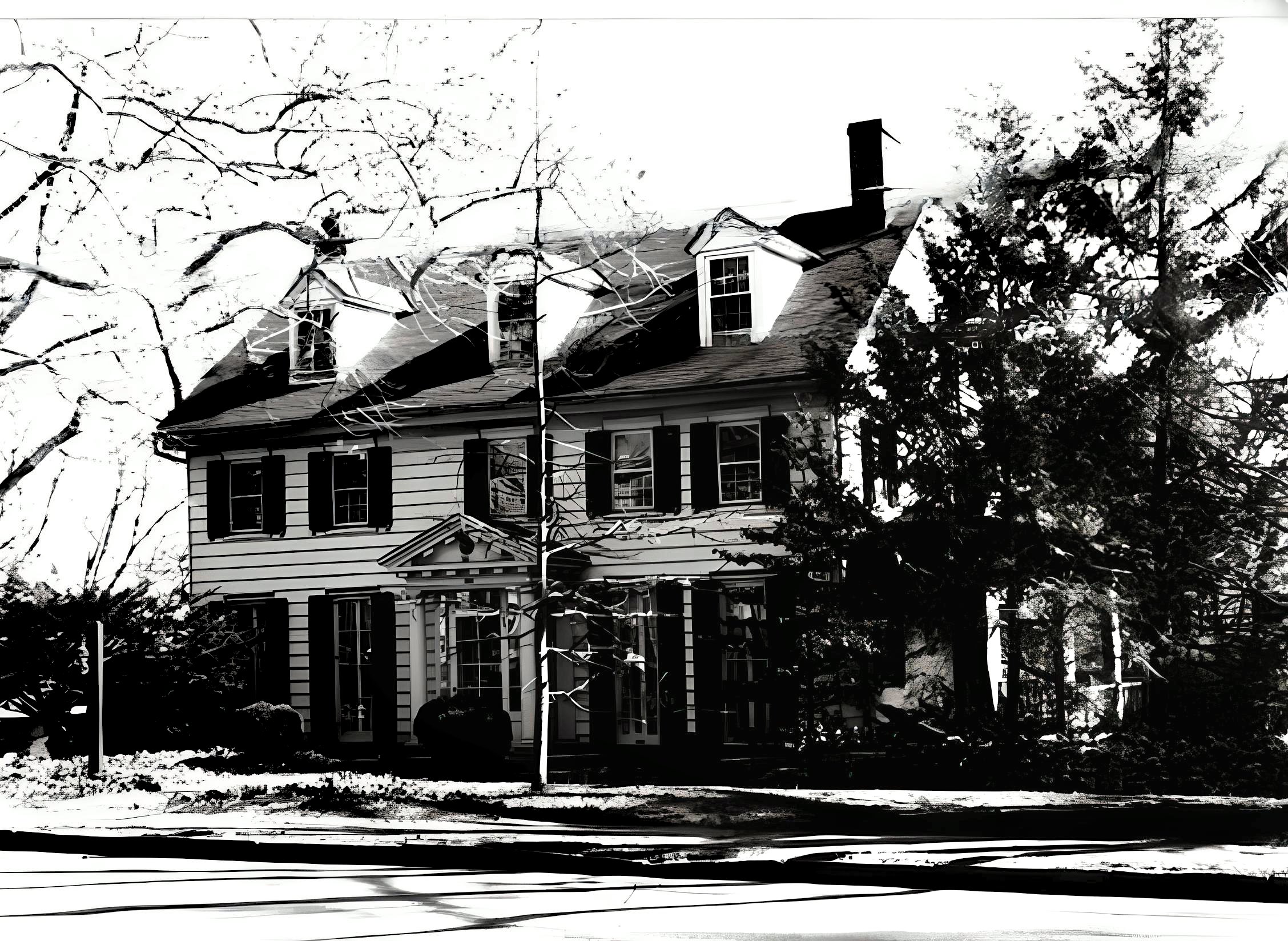Hugh Hollinshead, a clock and watchmaker, built this house c. 1770. It is a 2-1/2 story, 5-register Georgian house, which features a front portico enclosure, porches on the right side and the rear, as well as floor-to-ceiling French doors on the front, side and rear of the house. A detached accessory building in the backyard is a carriage house with a pyramid hip roof.
The house was built using a timber framing construction style and is approximately 1500 sq. ft. with a 4-room layout. The original first-floor consisted of a front living room, dining room and kitchen. The original second-floor consisted of two bedrooms and a hallway. The original third floor configuration is unknown. Trees from the 18th century, an American Beech and a European Beech, can be found growing on the property today.
The flooring consists of random width, Old Growth Heart Pine boards in 12-15-18” widths, 10-14’ lengths, and 6/4 thickness with hand-forged nails.
Front door detail
Lightning strike scorch marks on a former outer wall. Hidden since the mid-1800s.
Hugh Hollinshead lived and had a shop here. He was a prosperous landowner of a 300 acre property as shown in the 1774 tax ratables for Burlington County. Hugh was cousin to another Moorestown clockmaker, Morgan Hollinshead whose shop, now demolished, was also located on Main Street in front of where the Moorestown Friends Meeting campus is now located. Unlike his cousin’s, very few of his tall case clocks survive to this day.
Hugh Hollinshead clock
Hugh Hollinshead House, c. 1890
Continue reading for more details…
The lane to the east of the Hollinshead House was originally part of an old road which passed between Moorestown and Mt. Laurel which was laid out as a public highway in 1761. The old road was part of a Native American system of roads that passed from the Delaware river all the way to the Atlantic Ocean. In 1796, the current Mt. Laurel Road was designed to replace the old road. The old road has been called variously “the road between Moorestown and Mount Laurel,” “the old Evesham Road” and “the road to Mount Laurel Meeting”. Having ceased to be a through road, the remnant became Pettit’s Lane, for the farm down the hill, now demolished. Through practically all of the 20th century it was known as Featherbed Lane, and it is now called Collina Way.
Porch of the Hugh Hollinshead House
After the Hollinsheads, the Higbee family lived in the house. According to the Moorestown Chronicle dated June 2, 1938, Beulah Higbee gave singing lessons to David Scull Bispham, the world famous opera baritone who spent his formative years in Moorestown.
Radiators are American Radiator Company, “Rococo” model, from approximately 1897-1902 on a twin-pipe steam system
Lydia Higbee Morris returned to this house after the death of her husband Major Louis Morris with her children Louis, Jenny and John. Major Morris fought in the Civil War and after the war was stationed with his family in Minnesota. When they returned, Lydia was an active member of the W.C.T.U.
"LM" initials, possibly Louis Morris, carved on back porch chimney stack, from mid-1800s.
This was also the long-time home of the Benjamin Cadbury family. Benjamin was very active in Quaker affairs and worked in the family business, the Hajoca Corporation, which was one of the largest plumbing, heating and industrial supply companies in the USA at the time. The initials "HJC" can be found imprinted on several pipes in the house, for Benjamin Cadbury’s HAJOCA plumbing company.
Hugh Hollinshead House, present day











